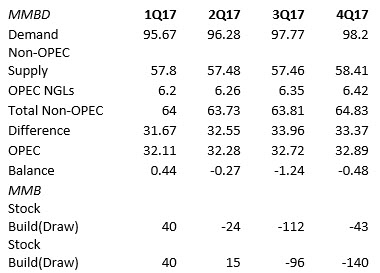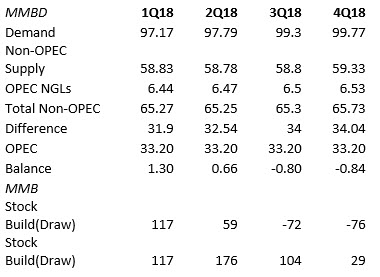Uncertainties for the balance of 2018 imply that stocks could fall sharply or be adequate. As a result, prices may spike or drop into the $50s, depending on what unfolds.
President Trump has sway over Saudi Arabia and the other Gulf producers. He can also fine-tune the implementation of sanctions on Iran and waivers to them. I’m expecting he will do whatever he has to, to avert a price spike going into the November mid-term elections.
July Production Changes
OPEC estimated in its August Monthly Oil Market Report (MOMR) that its crude production in July averaged 32.323 million barrels per day (mmbd). That was about 40,000 b/d higher than in June. The “compliance” level with the 2016 deal dropped to 97%, the first time less than 100% in nearly a year.
Saudi Arabia’s production was reduced by about 52,000 b/d, but that was more than offset by gains of 79,000 b/d in Kuwait and 69,000 b/d in the UAE.
Iran’s production fell by 56,000 b/d while Venezuela’s output dropped 48,000 b/d. Libya’s output also dropped by 57,000 b/d. Continue reading "Oil Price Spike Will Most Likely Be Averted"



